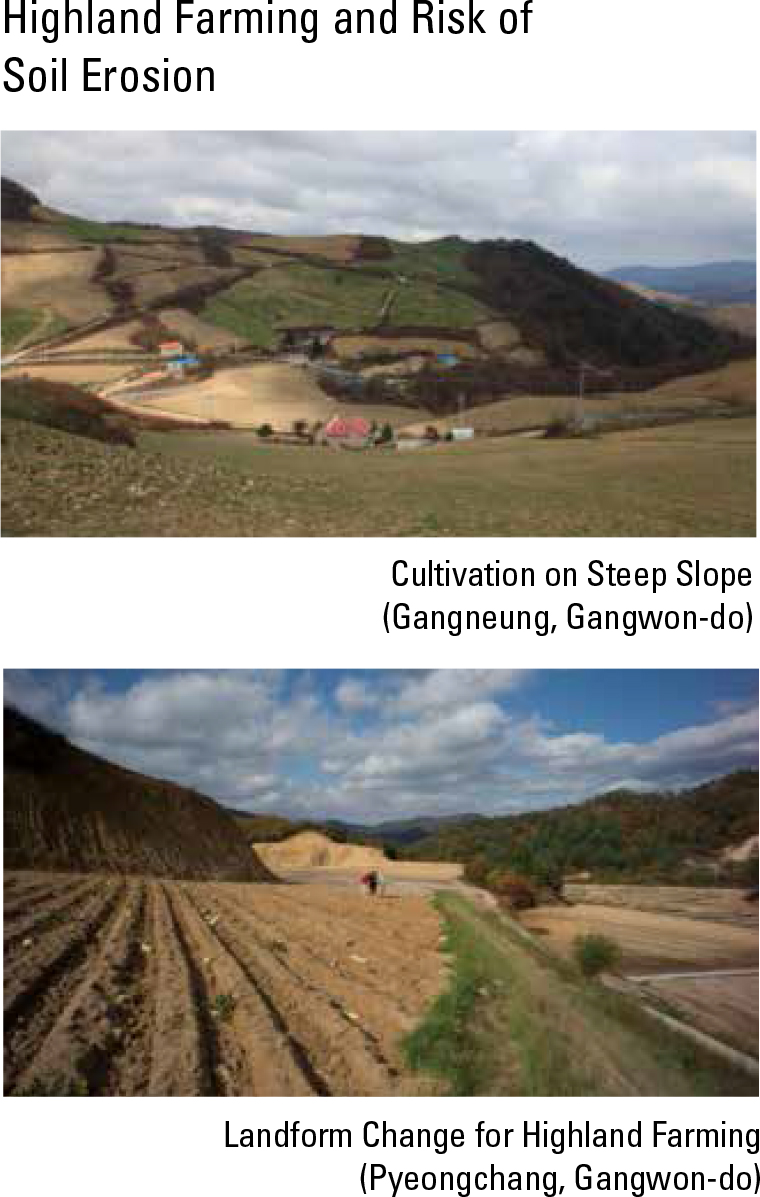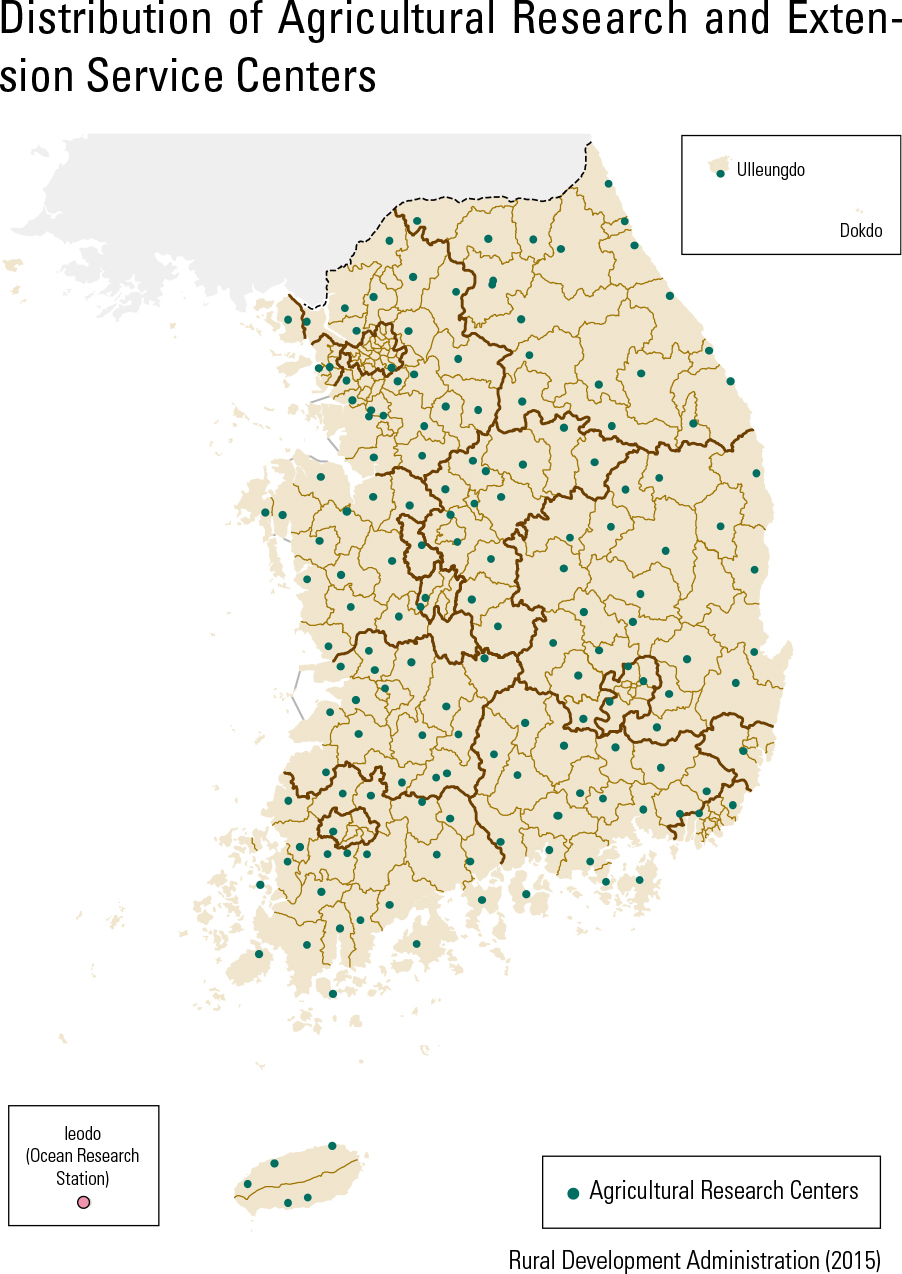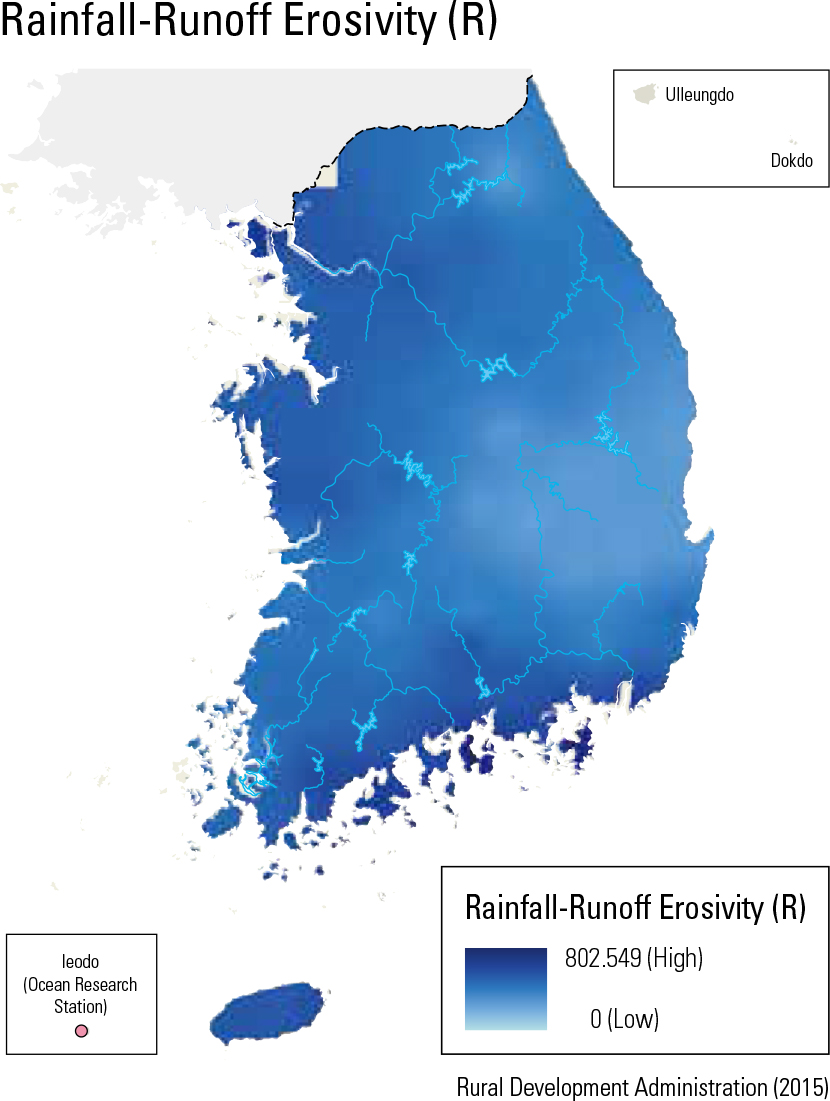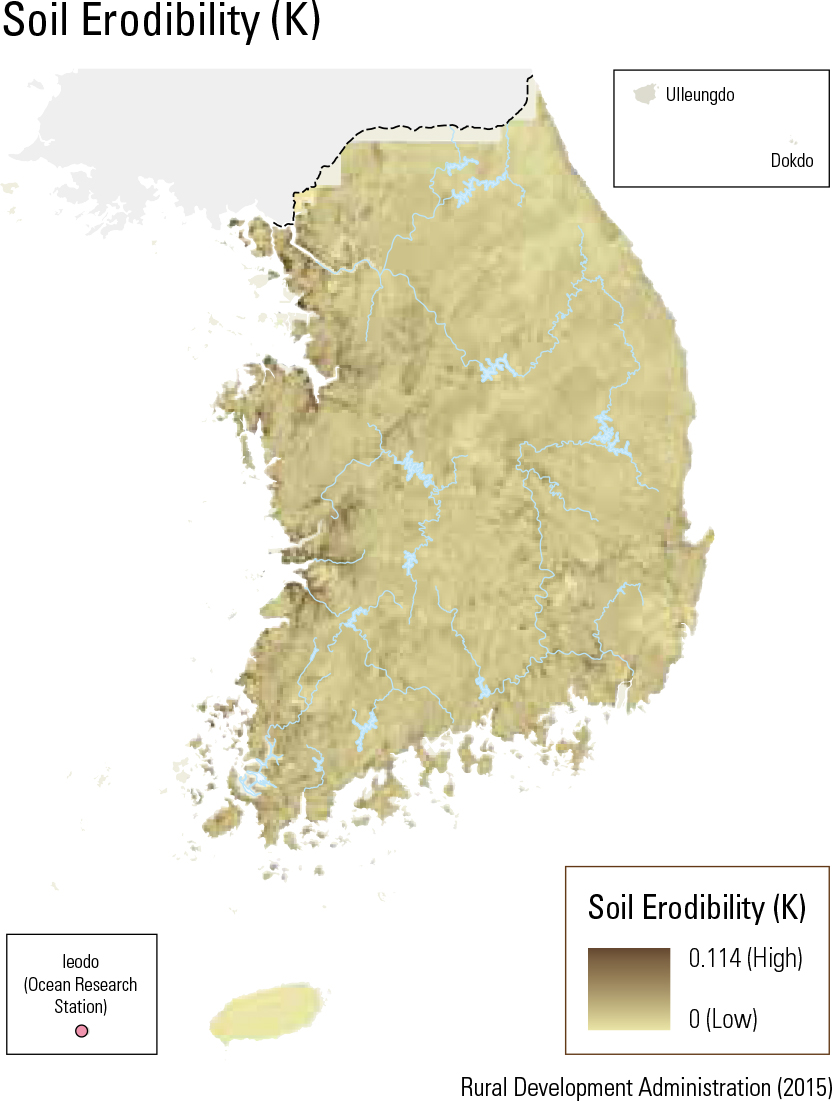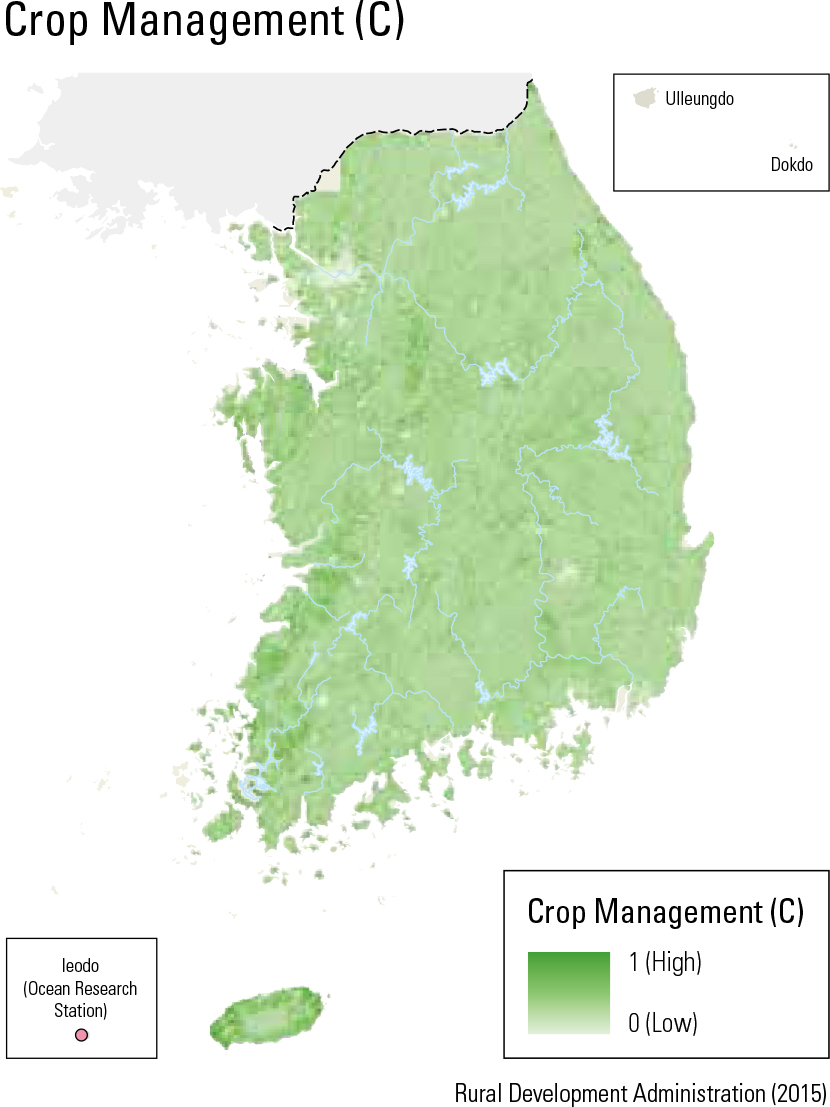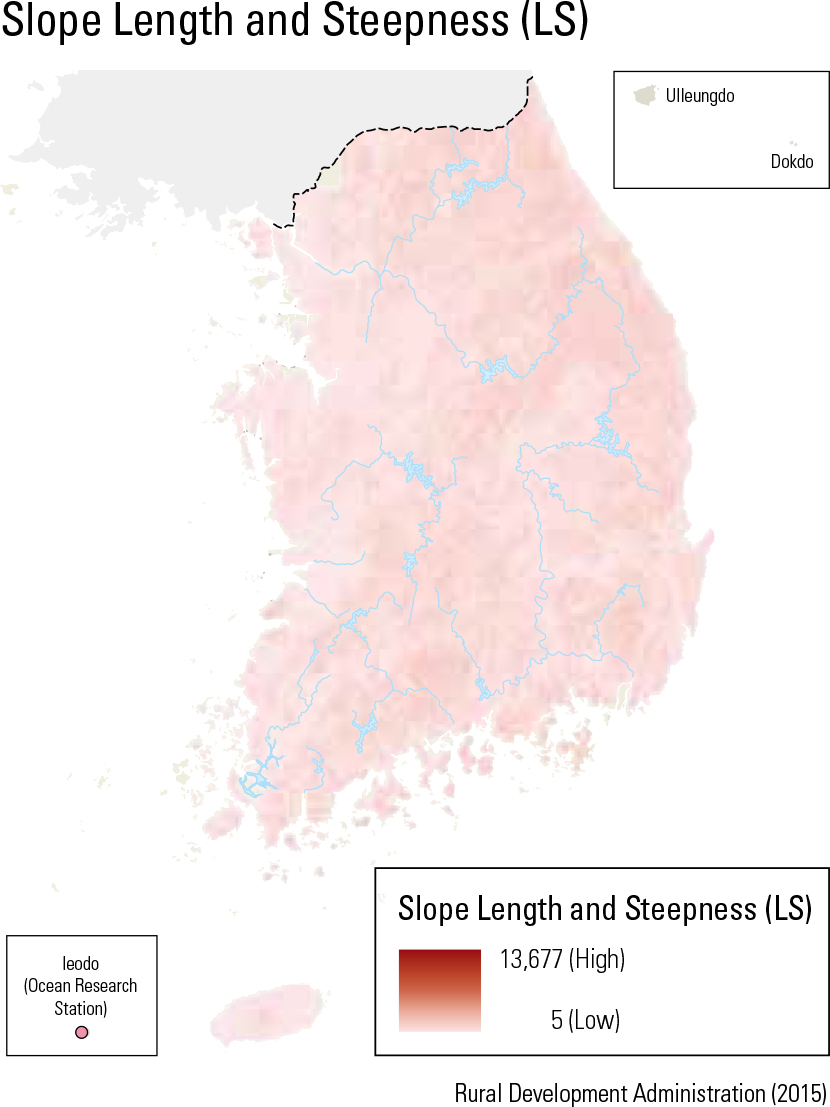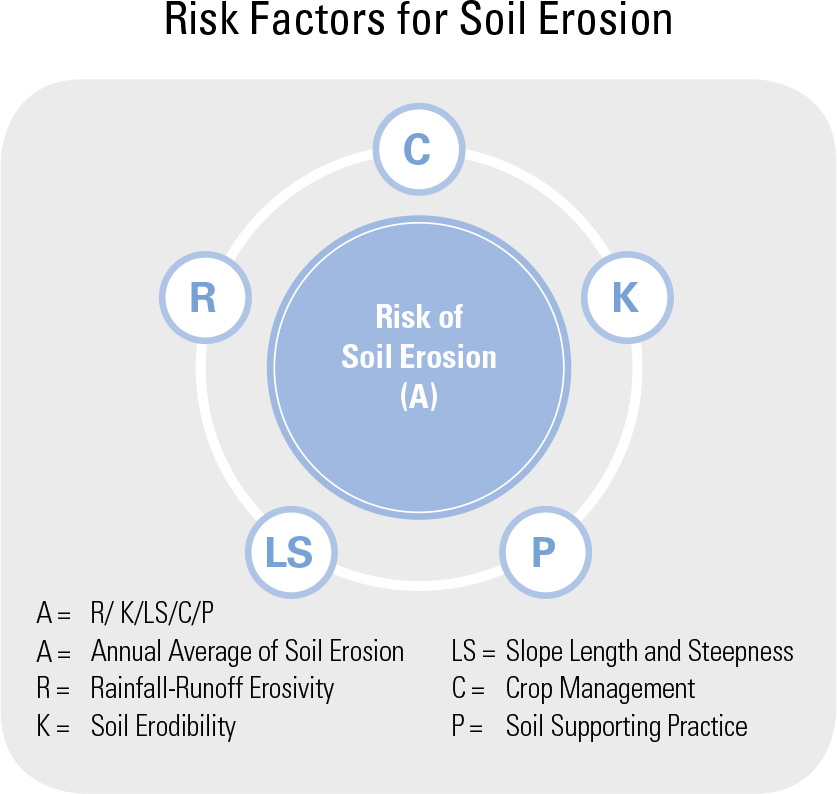English II
Sandy soils make up the majority of soils in Korea due to the large distribution of granite and granite gneiss. Most Korean soils are coarse, clas- tic soils that result from topographic and climate factors such as the large proportion of mountain- ous area, seasonal temperature changes, concen- trated precipitation in summer, and freezing in winter. These factors cause soils to have low pH values, low organic content, rapid nutrient leach- ing, and thus, low possible yield. One of Korea’s main soil management issues is erosion. Currently, annual net loss of soil is estimated to be more than 50 million tons, with the most damage occurring on cultivated lands. Total loss of soil from farm elds is estimated to be 37.7 tons/ha on average, while it is 3.5 tons/ ha in forests and under 0.3 ton/ha in paddy elds. Ultimately, as much as 27 million tons of soil are lost over a mere 10% of cultivated land. The loss is severe, particularly in the mountainous areas of Gangwon-do, Yeongnam and Honam regions, and regions of high precipitation such as Nam- hae-gun, Geoje-si, and Goseong-gun. Recent ex- pansion of highland farming serves as yet another reason for rapid soil loss. Eroded soil from these farms eventually ows into nearby rivers, causing a destructive effect on the river and riparian eco- system. To prevent further worsening of the situation, Korea has been establishing agricultural technol- ogy centers in every province to assist active soil management. Some major functions performed by these centers are as follows: developing and dis- seminating new crop breeds, education of proper crop selection and cultivation, and evaluations and treatment for certain soils to enhance produc- tivity.
page_2 |
